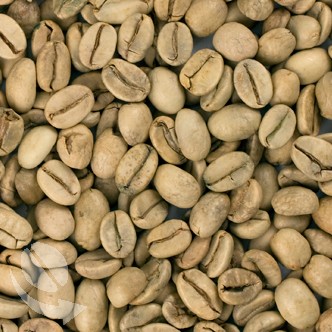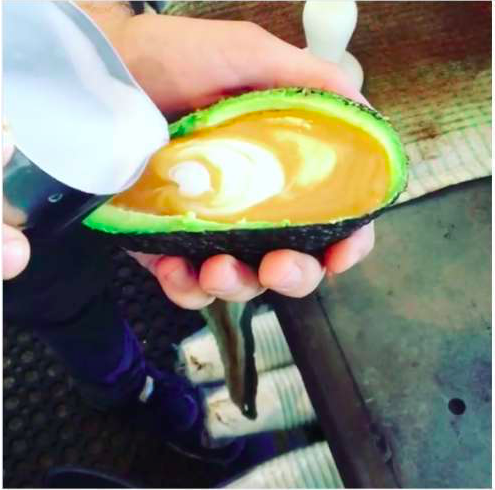Strange coffee with wheat flavor: Malabar style-stained coffee in India
Professional barista communication, please pay attention to coffee workshop (Weixin Official Accounts cafe_style )
introduced
When it comes to Asian coffee, most people think of Indonesia's golden mantinen, toraya, Vietnamese coffee, Laotian coffee, and recently Taiwan coffee, Yunnan coffee, etc. Indian coffee has a long history, and it is also the first country in Asia to grow coffee. It has always occupied a place in the coffee world and is also a major country in global coffee production.
In the early days, Indian coffee was transported by sea from the Malabar coast to Europe, often six months after it arrived in Europe. During the long sea voyage, these beans were influenced by the sea breeze and seasonal wind, and gradually changed in flavor characteristics and color, which led to the birth of today's Indian wind maraba fine beans.

India's wind-stained Malabar coffee is one of the world's most famous boutique coffee beans. Wind-stained coffee beans are also known as "monsoon coffee beans" in Taiwan, named after their English name "Monsoon". His approach is complex and strange, mainly through the interaction between the earth and the sea breeze to produce complex, unique flavor. The name "air-soaked maraba" refers to the unique coffee product of its air-soaked beans processed in maraba on the west coast of india, where coffee is subjected to a cumbersome and rigorous air-soaked treatment before being shipped around the world.

Wind-stained coffee needs to be made from sun-dried beans. All factories dealing with wind-stained coffee face west to meet the salty and humid monsoon blowing from the southwest sea. Coffee beans are laid flat in the wind-stained field. The windows are fully open. After the wind stains to a certain extent, they are re-entered into bags. However, because the beans will expand a lot during the process, the coffee beans cannot be filled too much, and the coffee bags cannot be stacked too tightly to avoid mildew due to lack of ventilation. Coffee beans should be poured out from time to time and the linen bags should be replaced. To prevent the breeding of mold, it can be said that it is a very time-consuming project. The air-curing period is about 12 to 16 weeks. After ripening, the beans are further fumigated to drive away weevil insects. Finally, the beans are manually sifted to remove the failed beans that have not turned golden. After three to four months of air-soaking, green coffee beans expand by one to two times their volume and decrease in weight and density.
The wind-stained Malabar coffee beans seem to be large and fat, but they are soft beans with strong outside and dry inside. This is a change caused by months of weathering. Coffee beans long-term exposure to the humid monsoon for several weeks, not only make the beans yellow, the acidity of the coffee itself also reduced a lot, taste very special. Malabar coffee beans can be used as a single drink, but they are also suitable for blending blended coffee beans.
production history
India Monsooned Malabar AA+
Country of manufacture: India
Place of Origin: Malabar
Grade: Malabar AA+
Treatment method: wind stain after sun exposure
Category: Arabica
Flavor overview
Wheat, straw, roasted nuts, walnut wood, Nanyang spices, brown sugar honey, fat sense sticky
Important Notice :
前街咖啡 FrontStreet Coffee has moved to new addredd:
FrontStreet Coffee Address: 315,Donghua East Road,GuangZhou
Tel:020 38364473
- Prev

New trend?! Avocado latte appeared in San Francisco Cafe
Professional barista communication Please follow the coffee workshop (Wechat public account cafe_style) the coffee maker pours the avocado latte into half of the avocado. (taken from Instagram) recently, avocado has made national news. Not only has the price of avocado doubled in three months, one has sold for more than two yuan in the Bay area, but also because millennials process cheese.
- Next

Come and watch! Set off a delicious new trend all over Ins's Gothic black and white latte!
Exchange of professional baristas please follow the coffee workshop (Wechat official account cafe_style) recently a black-and-white latte appeared on Ins, does it look cool! It seems that there is still some authentic feel ▼ in southern black sesame paste. Foreigners must think that this latte is inspired by the black sesame paste that Chinese people like to drink. In fact, these black powders are activated carbon (Active charc)
Related
- A complete list of coffee bean names and their meanings! What is Yejia Shefi coffee? Where is Mantelin coffee?
- What grade does Arida Manor Kaduai coffee beans belong to? What treatment is Arida ASD slow anaerobic sun exposure?
- The milk tea cup becomes smaller?! Overlord Tea Girl launches a new "Return to Yunnan" series
- Accused of selling counterfeit and high-priced coffee beans! Well-known boutique coffee brand "Oukelao" bowed and apologized!
- How to make espresso dumplings? Can I eat coffee and glutinous rice balls together?
- Save the unformed and stagnant powder cakes in one second! What is the problem with stagnant water in the powder bowl of the espresso machine?
- What does hand-brewed coffee stop mean? Why is it not recommended to make coffee by hand?
- Is it normal to smell like coffee? Why does coffee smell like alcohol? What's wrong with the strong smell of cold extract ice dripping ice brewed coffee?
- How to solve the problem that hand-brewed coffee extraction takes too long? Why is the water flowing so slowly when making coffee?
- The main points of making Australian white coffee, the proportion details, how does Australian white properly foam and blend the flowers?

